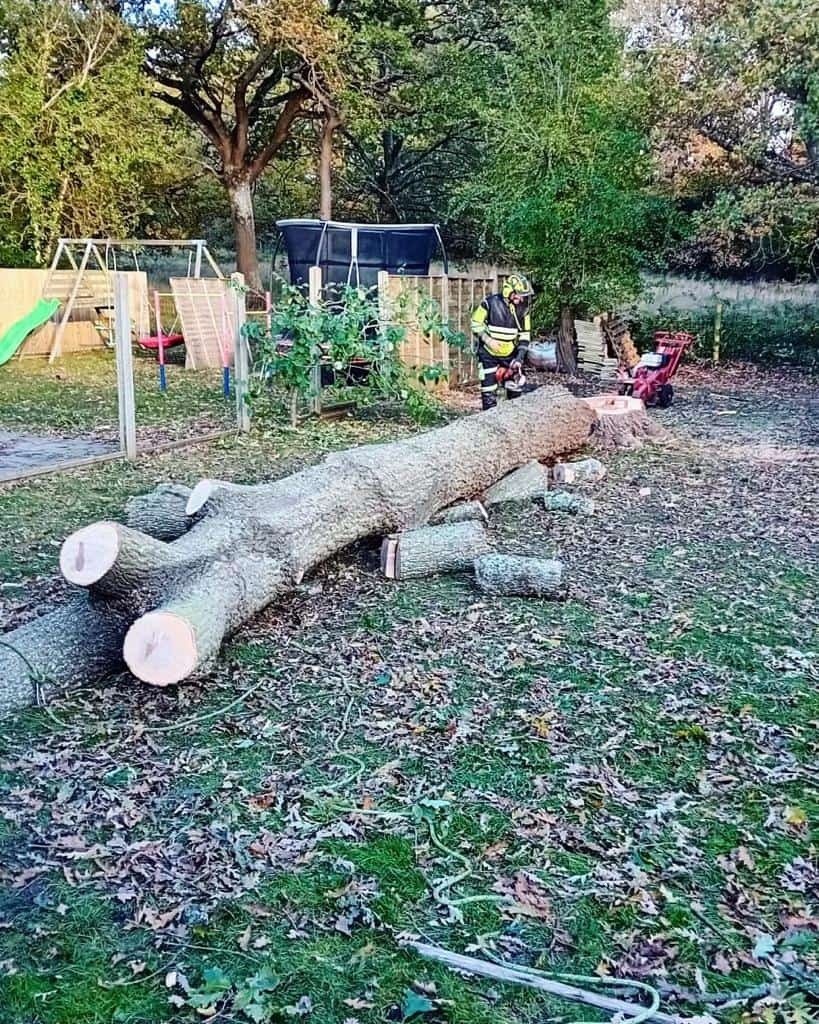Introduction
Trees, like all living organisms, are vulnerable to disease. Whether it’s fungal infections, pest infestations, or bacterial decay, tree diseases can spread quickly if left untreated — sometimes compromising the entire structure of the tree. The good news? Tree surgery is one of the most effective ways to help diseased trees recover and thrive once more.
At NS Tree Surgery Aldershot, we specialise in diagnosing and managing tree health across Hampshire. Our professional approach helps restore trees to full vitality while preserving the safety and beauty of your outdoor space.
Recognising Tree Disease Early
The importance of observation
The earlier a tree disease is identified, the better the chance of successful recovery. While some symptoms are obvious, like cankers or discoloured leaves, others can be more subtle. Common early signs include:
- Sudden leaf drop or yellowing
- Fungal growth around the trunk or roots
- Dieback of branches or twigs
- Soft, weeping patches on bark
- Unusual insect activity
A professional assessment by NS Tree Surgery Aldershot ensures the problem is accurately identified before irreversible damage occurs.
Tree Surgery as a Strategic Treatment
Not just pruning — it’s targeted recovery
Tree surgery isn’t simply about removing branches. It’s a carefully considered process that focuses on removing diseased or deadwood, improving structure, and promoting healthy regrowth. This process may include:
- Crown thinning – to improve airflow and reduce fungal spread
- Selective pruning – removing infected limbs before disease travels
- Deadwood removal – reducing strain and decay on the main structure
- Canopy reshaping – encouraging healthier light distribution and growth
Each step supports the tree’s recovery by reducing stress and helping the immune system concentrate energy where it’s needed most.
Preventing the Spread of Infection
Stopping it at the source
One of the major concerns with tree disease is its potential to spread — not just within the same tree, but to others nearby. Tree surgery plays a crucial role in halting this process. Key preventative measures include:
- Using sterilised tools to avoid cross-contamination
- Removing infected branches at the correct point to avoid further damage
- Disposing of diseased material off-site to limit spread
- Applying protective treatments or fungicides where appropriate
At NS Tree Surgery Aldershot, we take every precaution to ensure that infected trees are treated without endangering the wider landscape.
Improving Tree Resilience Post-Recovery
Supporting long-term health
After surgical intervention, a tree often enters a period of adjustment and healing. Ongoing care is essential to maintain its resilience. This may involve:
- Soil improvement and mulching
- Appropriate watering and feeding
- Avoiding further injury from nearby construction or lawn equipment
- Regular health checks and follow-up pruning as needed
The goal is to help the tree regain strength, reinforce its natural defences, and prevent re-infection.
Types of Diseases Tree Surgery Can Address
Not every condition requires removal
While severe infections might lead to complete tree removal, many diseases respond well to early surgical treatment. Some examples include:
- Ash dieback – early pruning of infected areas can delay decline
- Honey fungus – targeted excavation and removal of compromised roots
- Bacterial canker – cut-back and wound cleaning improves chance of recovery
- Verticillium wilt – selective limb removal supports immune response
The approach must always be tailored to the species, the condition, and the stage of disease — something the experienced team at NS Tree Surgery Aldershot specialises in.
When Surgery Isn’t Enough
Knowing when to let go
In some cases, disease may have spread too far. If structural integrity is compromised or the risk of collapse becomes significant, tree removal may be the safest option. However, this is always a last resort. Our team assesses each case with care and expertise, always seeking to save the tree where possible.
That said, even when a tree must be felled, prompt stump removal and proper site care can prevent the disease from affecting future plantings.
Conclusion
Tree surgery isn’t just about shaping trees for aesthetics — it’s a vital method for restoring health and stopping the spread of damaging infections. With the right intervention at the right time, diseased trees can often make a full recovery, continuing to thrive for years to come.
For expert tree care in Aldershot and throughout Hampshire, NS Tree Surgery Aldershot is here to help. We’re committed to protecting your trees and preserving the health of your outdoor spaces — one branch at a time.
Call us on: tel:01252986199
Click here to find out more about NS Tree Surgery Aldershot
Click here to complete our contact form and see how we can help with your trees needs.

